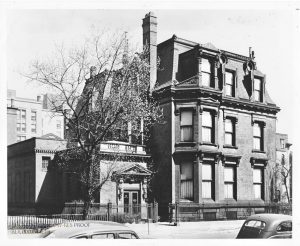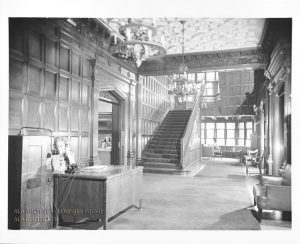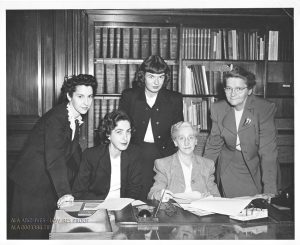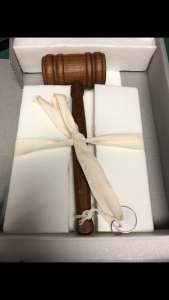Halloween is quickly approaching and during this spooky season, we at the ALA Archives have been meditating upon one of ALA’s old headquarters, the McCormick Mansion. In 1945, ALA purchased the Cyrus Hall McCormick Mansion at 50 E. Huron Street in Chicago to use as its new headquarters. However, by 1955, ALA was investigating other options and by 1960, ALA was ready to not only ready to move out of the mansion, but also tear it down.
Why would ALA want to move out of the McCormick Mansion so quickly and destroy it? Was it because the mansion was, well, a mansion and not a suitable office space? And they wanted to use the land to build a proper office building that would be their home for over 50 years? Or … was it because the mansion was haunted?
We have zero proof that the McCormick Mansion was haunted. No accounts of books suddenly being shelved out of order, cardigans being mysteriously moved, or card catalog drawers opening and shutting on their own. All we have are photographs of an eerie looking mansion filled with librarians and staff.




We may never know the true reason why ALA tore down the McCormick Mansion, other than the abundance of reports, studies, plans, and even a film about needing a better office space, much of which we hold at the ALA Archives. However, there is a trace of the mansion that still remains. Forged from the staircase, is a gavel, now in the possession of the ALA Archives. Who knows what spirits may linger within the object? Or is it just a wooden gavel, one of many that ALA had made to give to staff as an award for their service? This and many other questions will go unanswered and probably unasked until next Halloween.
For a researched guide on ALA’s headquarters, without any wild speculation, please read our blog post, A Short History of ALA Headquarters.